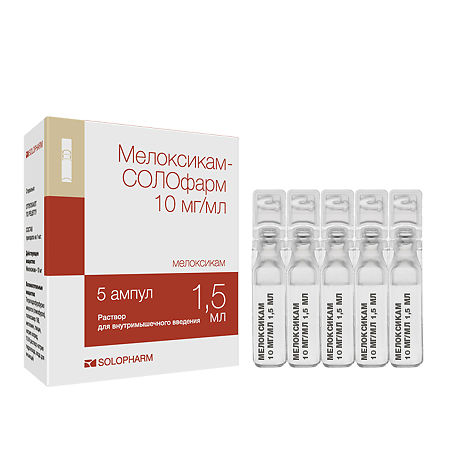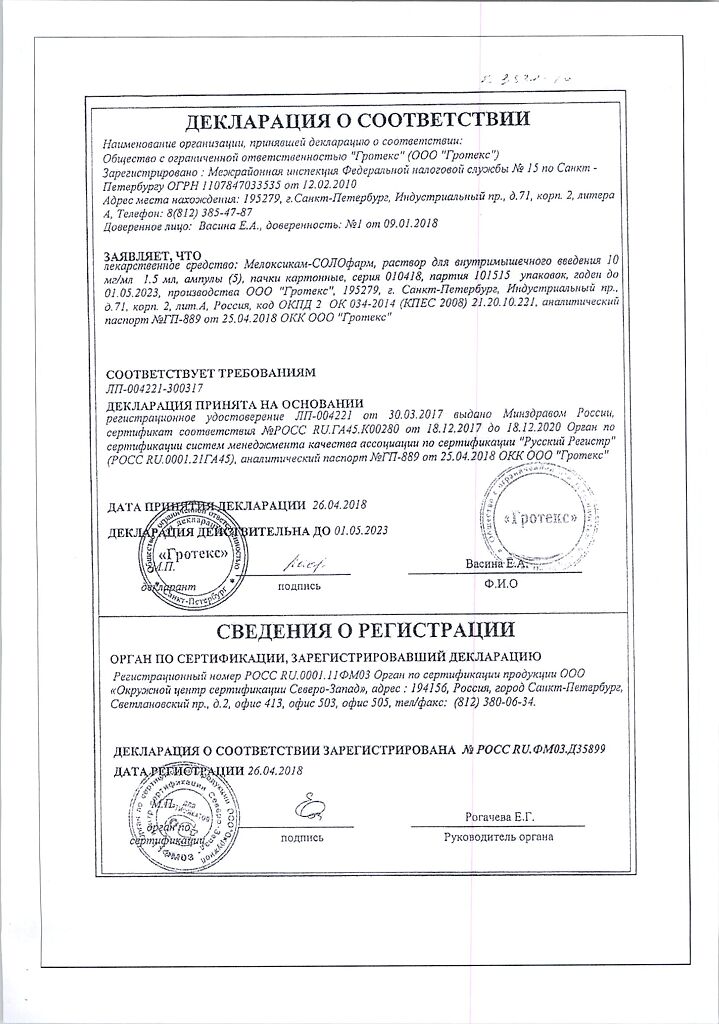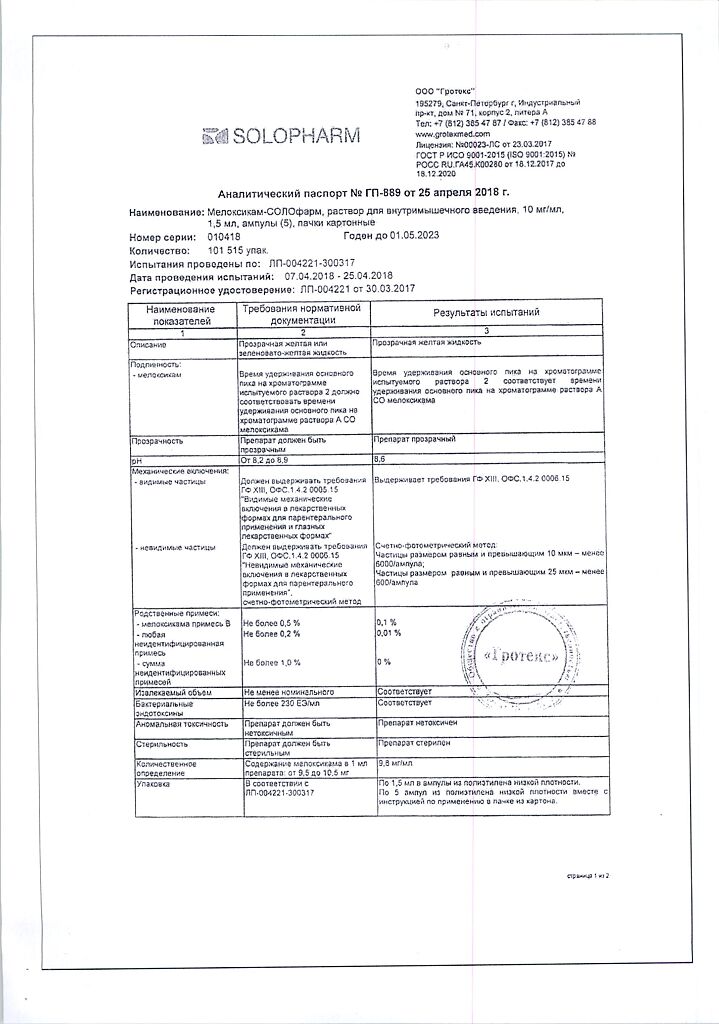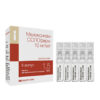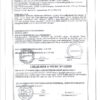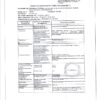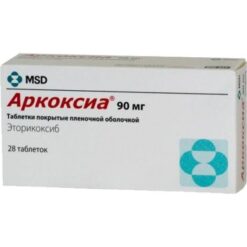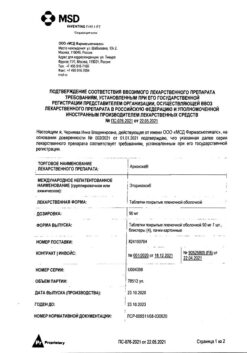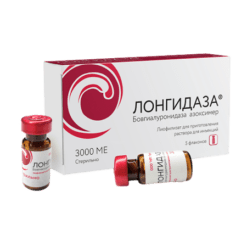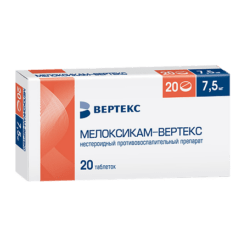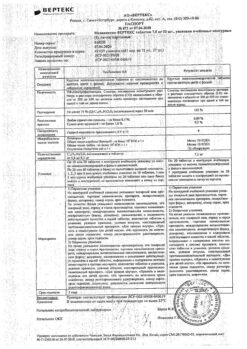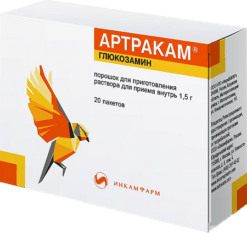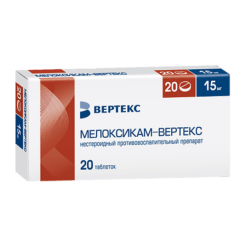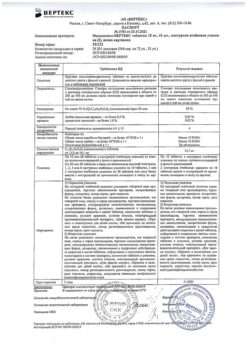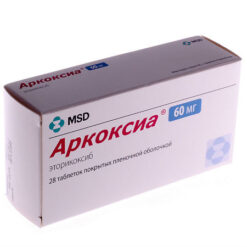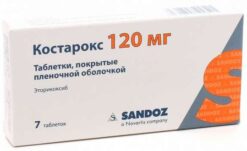No products in the cart.
Meloxicam-Solopharm Politvist 10 mg/ml 1.5 ml, 5 pcs.
€1.00
Out of stock
(E-mail when Stock is available)
Description
Pharmacotherapeutic group:
Non-steroidal anti-inflammatory drug (NSAID)
ICD-10:
XIII.M05-M14.M05 Seropositive rheumatoid arthritis
XIII.M20-M25.M25.5 Joint pain
XIII.M15-M19.M15 Polyarthritis
XIII.M45-M49.M45 Ankylosing spondylitis
ATC:
M.01.A.C.06 Meloxicam
M.01.A.C Oxycams
Pharmacodynamics:
Meloxicam is a non-steroidal anti-inflammatory drug with analgesic, anti-inflammatory and antipyretic effects. It belongs to the class of oxycams, derivatives of enolic acid. Anti-inflammatory effect is associated with inhibition of enzymatic activity of cyclooxygenase-2, which is involved in the biosynthesis of prostaglandins in the inflamed area. To a lesser extent, meloxicam acts on cyclooxygenase-1, which is involved in the synthesis of prostaglandin, protecting the mucous membrane of the gastrointestinal tract and is involved in the regulation of blood flow in the kidneys.
Pharmacokinetics:
Absorption
The relative bioavailability is approximately 100%. After intramuscular administration of the drug at a dose of 15 mg, the maximum plasma concentration of the drug (Cmax) is 1.62 mcg/mL and is reached within approximately 60 minutes.
Distribution
Meloxicam binds well to plasma proteins, especially to albumin (99%). It penetrates the synovial fluid, the concentration in the synovial fluid is about 50% of the plasma concentration. The volume of distribution is low, approximately 11 liters. Interindividual variation is 30-40%.
Metabolism
Meloxicam is almost completely metabolized in the liver to form four pharmacologically inactive metabolites. The main metabolite, 5′-carboxymeloxicam (60% of the dose value), is formed by oxidation of the intermediate metabolite 5′-hydroxymethylmeloxicam, which is also excreted, but to a lesser extent (9% of the dose value). In vitro studies have shown that CYP2C9 isoenzyme plays an important role in this metabolic transformation, CYP3A4 isoenzyme has additional importance. Peroxidase, the activity of which probably varies individually, is involved in the formation of the other two metabolites (constituting, respectively, 16% and 4% of the value of the drug dose).
Extracted equally in the feces and urine, mainly as metabolites. Less than 5% of daily dose is excreted unchanged in feces, in urine the drug is excreted unchanged only in trace amounts. The average half-life of meloxicam is 20 hours. Plasma clearance averages 8 ml/min.
Meloxicam exhibits linear pharmacokinetics at doses of 7.5-15 mg when administered intramuscularly.
There are reports that enterohepatic recirculation is characteristic of meloxicam when administered orally. When using oral dosage forms of meloxicam the average time to reach the maximum plasma concentration of the drug (TSmax) is 5-6 hours, and the violation of enterohepatic recirculation for any reason may increase the elimination of meloxicam and reduce its half-life to 13 hours or more (when taken orally).
Hepatic and/or renal insufficiency
Hepatic insufficiency and mild to moderate renal insufficiency have no significant effect on the pharmacokinetics of meloxicam. In terminal renal failure, increased volume of distribution may lead to higher concentrations of free meloxicam, so in these patients the daily dose should not exceed 7.5 mg.
Elderly patients
In elderly patients, average plasma clearance during equilibrium pharmacokinetics is slightly lower than in younger patients.
Indications
Indications
Initial therapy and short-term symptomatic treatment for osteoarthritis (arthrosis, degenerative joint diseases), rheumatoid arthritis, ankylosing spondylitis, other inflammatory and degenerative diseases of the musculoskeletal system, such as arthropathy, dorsopathies (for example, sciatica, low back pain, shoulder periarthritis and others), accompanied by pain.
Pharmacological effect
Pharmacological effect
Pharmacotherapeutic group:
Nonsteroidal anti-inflammatory drug (NSAID)
ICD-10:
XIII.M05-M14.M05 Seropositive rheumatoid arthritis
XIII.M20-M25.M25.5 Joint pain
XIII.M15-M19.M15 Polyarthrosis
XIII.M45-M49.M45 Ankylosing spondylitis
ATX:
M.01.A.C.06 Meloxicam
M.01.A.C Oxycams
Pharmacodynamics:
Meloxicam is a non-steroidal anti-inflammatory drug with analgesic, anti-inflammatory and antipyretic effects. Belongs to the class of oxicams, derivatives of enolic acid. The anti-inflammatory effect is associated with inhibition of the enzymatic activity of cyclooxygenase-2, which is involved in the biosynthesis of prostaglandins in the area of inflammation. To a lesser extent, meloxicam acts on cyclooxygenase-1, which is involved in the synthesis of prostaglandin, which protects the mucous membrane of the gastrointestinal tract and takes part in the regulation of blood flow in the kidneys.
Pharmacokinetics:
Absorption
Relative bioavailability is about 100%. After intramuscular administration of the drug at a dose of 15 mg, the maximum concentration of the drug in plasma (Cmax) is 1.62 μg/ml and is achieved within approximately 60 minutes.
Distribution
Meloxicam binds well to plasma proteins, especially albumin (99%). Penetrates into synovial fluid, the concentration in synovial fluid is approximately 50% of the concentration in plasma. The volume of distribution is low, approximately 11 L. Interindividual differences are 30-40%.
Metabolism
Meloxicam is almost completely metabolized in the liver to form four pharmacologically inactive metabolites. The main metabolite, 5′-carboxymeloxicam (60% of the dose), is formed by oxidation of the intermediate metabolite 5′-hydroxymethylmeloxicam, which is also excreted, but to a lesser extent (9% of the dose). In vitro studies have shown that the CYP2C9 isoenzyme plays an important role in this metabolic transformation; the CYP3A4 isoenzyme is of additional importance. Peroxidase is involved in the formation of the other two metabolites (constituting, respectively, 16% and 4% of the drug dose), the activity of which probably varies individually.
Removal
It is excreted equally in feces and urine, mainly in the form of metabolites. Less than 5% of the daily dose is excreted unchanged in feces; the drug is found unchanged in urine only in trace amounts. The average half-life of meloxicam is 20 hours. Plasma clearance averages 8 ml/min.
Meloxicam exhibits linear pharmacokinetics in doses of 7.5-15 mg when administered intramuscularly.
There are reports that when administered orally, meloxicam is characterized by enterohepatic recirculation. When taking dosage forms of meloxicam for oral administration, the average period of time until the maximum plasma concentration of the drug in the blood plasma (TCmax) is reached is 5-6 hours, while a violation for any reason of enterohepatic recirculation can increase the elimination of meloxicam and reduce its half-life to 13 hours or more (when taken orally).
Insufficiency of liver and/or kidney function
Failure of liver function, as well as mild or moderate renal failure, do not have a significant effect on the pharmacokinetics of meloxicam. In end-stage renal failure, an increase in volume of distribution may result in higher concentrations of free meloxicam, so in these patients the daily dose should not exceed 7.5 mg.
Elderly patients
In elderly patients, the average plasma clearance during steady-state pharmacokinetics is slightly lower than in younger patients.
Special instructions
Special instructions
Patients suffering from diseases of the gastrointestinal tract should be monitored regularly. If ulcerative lesions of the gastrointestinal tract or gastrointestinal bleeding occur, the drug must be discontinued.
Active ingredient
Active ingredient
Meloxicam
Composition
Composition
1 ml of the drug contains:
Active ingredient:
Meloxicam – 10.0 mg
Excipients:
Tetrahydrofurfuryl macrogol (glycofurol) – 100.0 mg
Poloxamer 188 – 50.0 mg
Meglumine – 6.25 mg
Elicin – 5.0 mg
Sodium chloride – 3.0 mg
10 M sodium hydroxide solution to pH 8.2-8.9
Water for injections up to 1 ml.
Description:
Transparent yellow or greenish-yellow liquid.
Contraindications
Contraindications
– Hypersensitivity to the active ingredient and auxiliary components of the drug, to acetylsalicylic acid or other NSAIDs.
– Complete or incomplete combination of bronchial asthma, recurrent polyposis of the nose and paranasal sinuses, angioedema or urticaria caused by intolerance to acetylsalicylic acid or other NSAIDs due to the existing likelihood of cross-sensitivity (including history).
– Erosive and ulcerative lesions of the stomach and duodenum in the acute stage or recently suffered.
– Inflammatory bowel diseases – Crohn’s disease or ulcerative colitis in the acute stage.
– Severe liver and heart failure.
– Severe renal failure (if hemodialysis is not performed, creatinine clearance less than 30 ml/min), progressive kidney disease, including confirmed hyperkalemia.
– Active liver disease.
– Active gastrointestinal bleeding, recent cerebrovascular bleeding, or an established diagnosis of diseases of the blood coagulation system.
– Age up to 18 years.
– Therapy of perioperative pain during coronary artery bypass surgery.
– Concomitant therapy with anticoagulants, as there is a risk of the formation of intramuscular hematomas.
– Pregnancy.
– Breastfeeding period.
With caution:
– History of gastrointestinal (GIT) diseases (presence of Helicobacter pylori infection).
– Congestive heart failure.
– Renal failure (creatinine clearance 30-60 ml/min).
– Coronary heart disease.
– Cerebrovascular diseases.
– Dyslipidemia/hyperlipidemia.
– Diabetes mellitus.
– Concomitant therapy with the following drugs: anticoagulants, oral glucocorticosteroids, antiplatelet agents, selective serotonin reuptake inhibitors.
– Diseases of peripheral arteries.
– Old age.
– Long-term use of NSAIDs.
– Smoking.
– Frequent drinking of alcohol.
Side Effects
Side Effects
Side effects that were considered possible to be associated with the use of the drug are described below. Side effects registered during post-marketing use, the connection of which with taking the drug was assessed as possible, are marked with *.
Within systemic organ classes, the following categories are used according to the frequency of side effects: very often (≥ 1/10), often (≥ 1/100, < 1/10), infrequently (≥ 1/1000, < 1/100), rarely (≥ 1/10000, < 1/1000), very rarely (< 1/10000), not established.
Interaction
Interaction
– Other inhibitors of prostaglandin synthesis, including glucocorticoids and salicylates – concomitant use with meloxicam increases the risk of ulcers in the gastrointestinal tract and gastrointestinal bleeding (due to synergistic action). Concomitant use with other NGTVPs is not recommended.
Overdose
Overdose
Symptoms: nausea, vomiting, epigastric pain, gastrointestinal bleeding, acute renal failure, liver failure, respiratory arrest, asystole, lethargy, drowsiness, increased blood pressure, coma, convulsions, cardiovascular collapse, cardiac arrest, anaphylactoid reactions.
Storage conditions
Storage conditions
Store at a temperature not exceeding 25 °C.
Shelf life
Shelf life
5 years.
Do not use after the expiration date!
Manufacturer
Manufacturer
Grotex LLC, Russia
Additional information
| Shelf life | 5 years. Do not use after the expiration date! |
|---|---|
| Conditions of storage | Store at a temperature not exceeding 25 ° C. |
| Manufacturer | Grotex Ltd, Russia |
| Medication form | solution for injection |
| Brand | Grotex Ltd |
Related products
Buy Meloxicam-Solopharm Politvist 10 mg/ml 1.5 ml, 5 pcs. with delivery to USA, UK, Europe and over 120 other countries.

